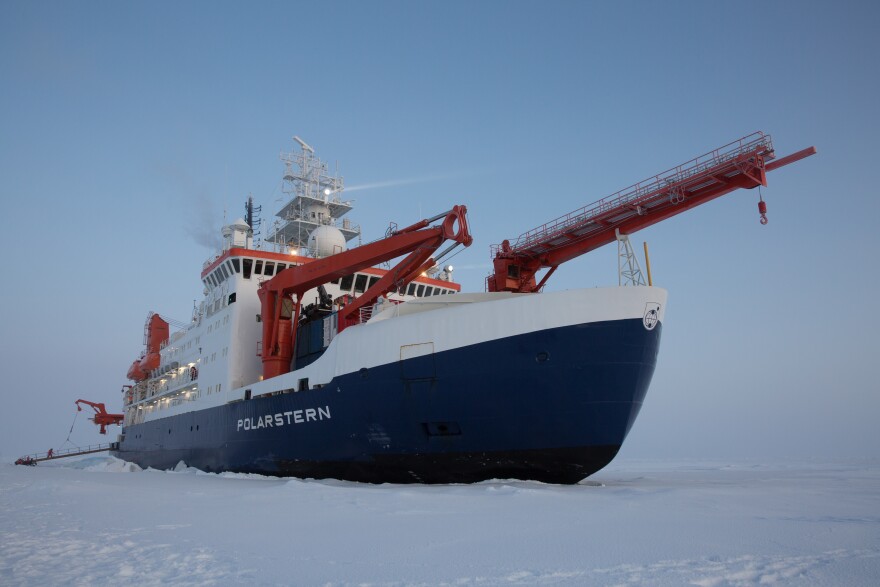The National Oceanic and Atmospheric Administration released its annual Arctic report card last week, with data tracking seven vital signs of Arctic health, including air and water temperatures, sea ice and tundra greenness. The conclusion: “Arctic ecosystems and communities are increasingly at risk due to continued warming and declining sea ice.”
In particular, there’s been a dramatic decline in older, thicker, more resilient sea ice.
“Back in 1985, that kind of ice covered thirty three percent of the Arctic in spring,” said Don Petrovich, a professor in the Thayer School of Engineering at Dartmouth College. “Now, it's down to one percent of the Arctic ice cover.”
To the extent that it’s being replaced, what is replacing it is younger, thinner, less resilient ice. That ice can’t survive major melting events.
And when sea ice disappears, it reveals dark water beneath it. That water absorbs more heat than the reflective, white ice, kicking off a vicious feedback loop of warming and melting, more warming and more melting.
In addition to contributing to the rapid warming of the Arctic, loss of sea ice could have profound ecological impacts.
But, for all we know about how the Arctic is changing, there are still more questions. In order to answer some of those, several hundred scientists have agreed to take turns spending two months on a ship that deliberately has gotten itself stuck in the Arctic sea ice and will drift with the ice for a full year.
Petrovich says MOSAiC, as the expedition is called, is “the biggest Arctic sea ice experiment ever.”
“One of the things we often think about with MOSAiC is we're in the drift track of Nansen,” Petrovich said, referring to the Norwegian explorer Fridtjof Nansen.
Nansen also got a ship stuck in the sea ice and let it drift back out, but his drift took three years. That was 1893-1896.
Over a century later, roughly the same trip is expected to take just one year because the ice moves faster now as a result of warming.
The fact that scientists will be on (in) the ice, observing it up-close for a full year worth of freezing and melting is key, according to Petrovich.
“We get to read the whole book,” he said. “Normally, you go out for a couple of months. It's like you have a complicated mystery and you get two chapters and you're supposed to figure out what's going on.”
The number of scientists and diversity of expertise – atmosphere, ice, marine biology, chemistry, and ecology – is also key. And Petrovich says there’s a real recognition that all of these different aspects of the Arctic are inextricably linked to each other.
“If you change the atmosphere, you change the ice. If you change the ice, you change the ocean. If you change the ocean, you change the ecosystems,” Petrovich said.
A complete picture of the changing Arctic is a mosaic, where ice, atmosphere, tundra, and ocean are the pieces.




